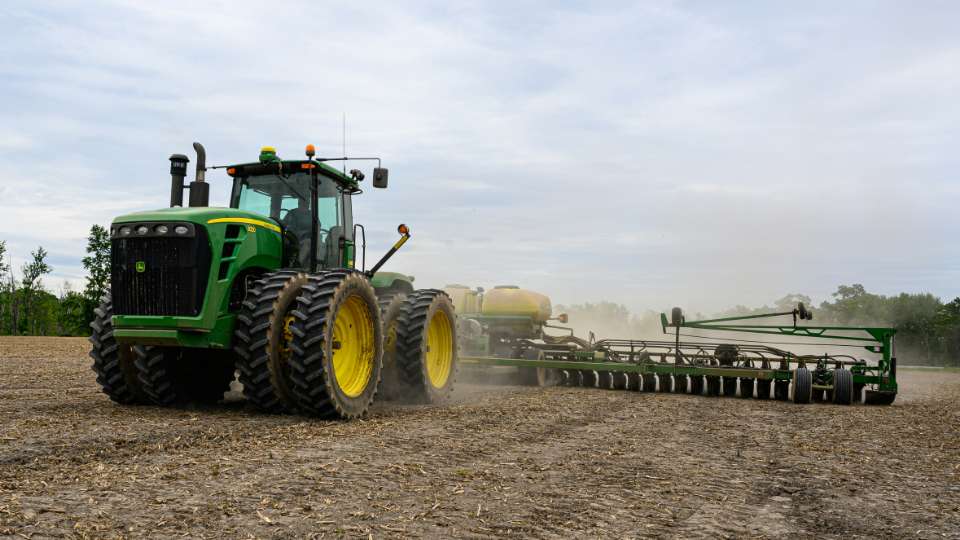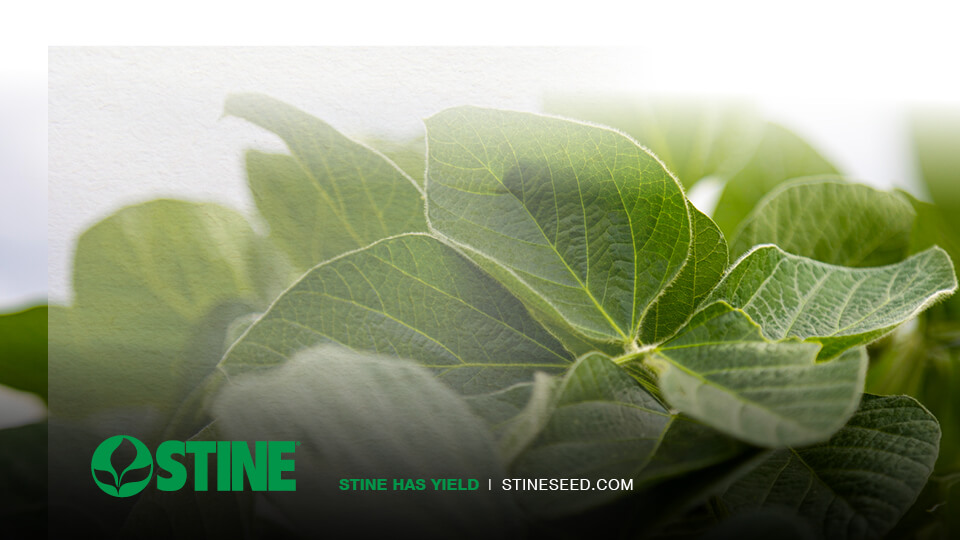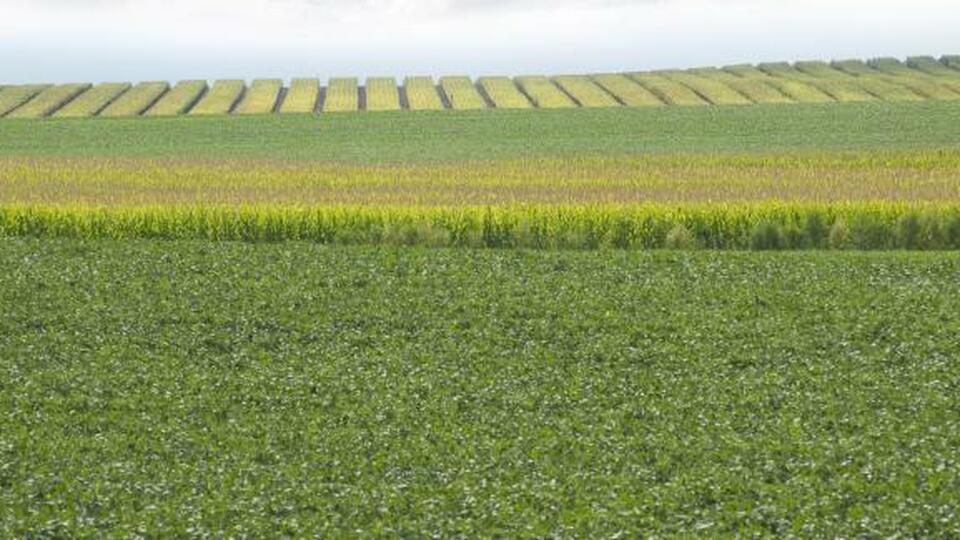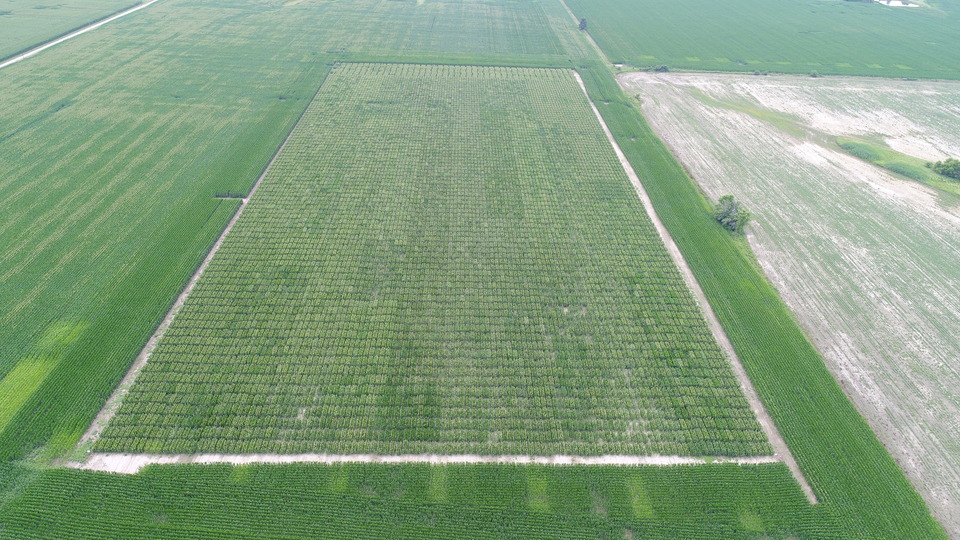Last week, we explored the value of Stine’s Elite Yield Trials and what gives us the leading edge in delivering data-backed, high-yielding products compared to our competitors. This week, we delve into the growth of our corn Elite Yield Trials and the future of the program.
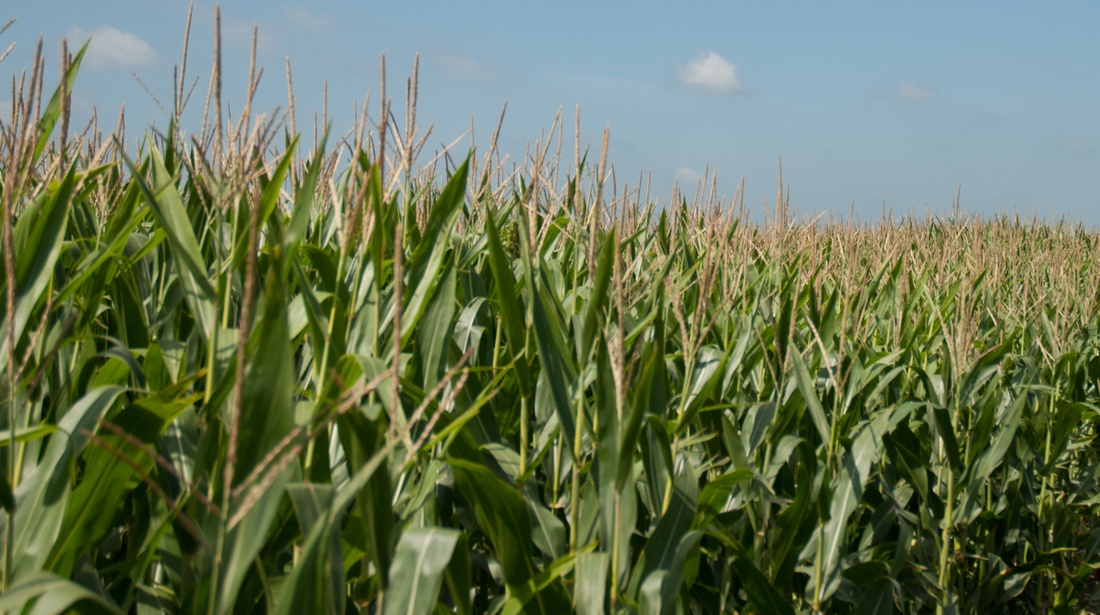
“There are over 100 companies in the U.S. seed corn industry directly competing with Stine®,” says Brian Hartman, Stine national corn product manager. “But only a handful are developing inbreds to make hybrids. We have the unique opportunity to sell growers something they can’t get in any other seed bag.”
The path to Stine corn Elite Yield Trials
Stine is one of a few seed companies in the world with its own corn breeding program — an effort we started in 1978. This ensures we’re equipped to continuously generate new inbred (parent) material and make self-pollination crosses to develop the latest high-yielding genetics every year.
“We’re taking the extra step of creating new inbred material, which you have to do to offer products that generally aren’t available in the industry,” says Hartman. “Our corn nursery is a huge undertaking, but it allows us to test different inbred lines to create high-yielding hybrids. Some match up, a lot don’t, but we don’t take any shortcuts from behind the desk. We test the products in real-world environments, unlike many of our competitors.”
The primary goal of the program is to build better corn faster. We cross more than 50,000 new lines of corn each year. Our off-season research facility in South America allows us to ramp up production of our parent lines and hybrids and churn four generations of seed per year in a process called fast-generation breeding.
“New hybrid combinations for yield testing are created in both North and South America,” says Warren Stine, assistant director of corn research. “Our South American station in Guyana runs non-stop 12 months of the year with a new breeding cycle every 90 days. This greatly speeds up the breeding process, allowing us to get new hybrids into testing faster than most of our competitors.”
Deciding what inbred lines to cross and hybrids to advance from our corn breeding program is a well-thought-out process. It requires years of strategy, testing and data compilation, and only a small percentage advance to the next level of research. In fact, of the 50,000 new lines tested, roughly 95% don’t advance to the next stage — Stine Pre-Elite Trials.
“Many companies use predictive analysis to tell them ahead of time which inbreds to move ahead, employing more of a mathematical model. We’re not into that,” says Hartman. “We use genetic markers to give us an idea of family backgrounds, disease resistance, etc., but we prefer to follow a naturalistic approach to breeding. It’s almost Darwinian; let Mother Nature sort through things.”
Pre-Elite Trials
Once a hybrid has been selected to advance from our corn nursery and fast-generation breeding program, it enters our Pre-Elite Trials. These brand-new, first-year hybrids are tested to see how they adapt to stress and are equipped to perform in tough environments. This is the first “check” they undertake against other hybrids to see how they perform compared to our current products in the system.
“In the Pre-Elite Trials, our primary goal is to have uniformity across the board,” says Jason Behn, head of corn research for Stine. “Everything from maturity, planting population, row spacing, inputs and more are aligned to ensure each product — even competitors — has an equal playing ground.”
To make things fair, all hybrids are grouped by maturity and planted in their correct maturity zone. After these hybrids have undergone one complete growing and harvest season, approximately 5–10% advance to the next phase — our Elite Yield Trials.
The Elite Yield Trials
Stine’s corn Elite Yield Trials are the biggest yet in 2024. We’ll have 1,060,000 plots on 1,600 acres in 43 separate locations. This is DOUBLE the size of our program last year. Once in the Elite Yield Trials, corn products spend one to four years in research to ensure full confidence in the product before we bring it to market.
“We’ve never had a program this big,” says Hartman. “It speaks to our passion as a company to get the right products to growers’ fields — ones we know will perform.”
As we covered in last week’s article, Stine corn Elite Yield Trials are tested in four different geographies throughout our selling territory and include early, early-mid, mid-maturity and full-season hybrids. We look at both conventional and traited products in the trials, so we’re able to determine when a trait might cause yield drag or when a situation might call for a conventional product or vice versa.
What’s unique about our process is we test conventional first.
“We are still old-fashioned in that we develop conventional first. Once we get a high-yielding conventional product, then we’ll go back and start testing the traits, whether it’s glyphosate resistant or designed to tackle above- and below-ground pests,” says Hartman. “Sometimes, we find that hybrids work better as just conventional or with only glyphosate.”
Other logistics unique to our program are planting population and row configurations. This year, we’re pushing populations between 40– 50K and testing in narrow rows.
“We’re on the high side for populations this year, but that’s intentional,” says Warren Stine. “We’re trying to stress our material to see how it works in different situations. We want to know that even in the toughest of environments, it still performs.”
One of the factors we take very seriously in testing is the impact of shading. Taller hybrids will block light from neighboring shorter hybrids in testing, ensuring the shorter hybrid suffers a yield penalty. We counter this by collecting measurements on plant height for each hybrid at multiple locations and then calculating a yield penalty or boost to be applied at harvest if one is appropriate.
“All the hybrid measurements used to be taken by hand, but we are increasingly using drones for this,” says Warren Stine. “The drones save on time and people. Collecting thousands of height measurements from the middle of a corn field in mid-August is not popular.”
While drones save time on in-season scouting and measurements, it still takes a lot of time and people to keep the program moving. Throughout the entire Elite Yield Trials process, it takes approximately 12 planter and 12 combine crews and hundreds of checkpoints during the busy growing season to measure product performance from emergence to harvest.
Commercialization bound
Before a hybrid is commercialized, it must pass our strict requirements for yield and standability.
“We have to have those two items to feel comfortable commercializing a product,” says Hartman. “This ensures we are providing the highest-yielding products to our growers; we owe it to them.”
How these features are evaluated takes a lot of replications and a large footprint. With 1,060,000 plots in 43 locations, we are looking at multiple hybrids over a wide geography and averaging the results from those areas.
“With a wider geography, we see how our hybrids perform in many different environments and weather situations,” says Warren Stine. “Farmers know well that no season is the same, and whatever Mother Nature delivers is what you get. When we bring these averages together, we get a full picture of how these products perform against each of nature’s stressors.”
Once the results are in, company CEO Harry Stine, in collaboration with our corn research and agronomy teams, looks at the data to determine which products are ready for the market.
Showstopper hybrids
We’ve had a lot of incredible products advance out of our Elite Yield Trials program and into the market, but a few have raised the bar on performance.
“Looking back at my 18 years with Stine, one of our original hybrids, 9724, really demonstrated what the Elite Trials and our breeding program are all about,” says Hartman. “It’s one of the first shorter hybrids we had and the most widely adaptable.”
According to Hartman, 9724 was a workhorse product that featured strong emergence, excellent root and stalks, high test weight, outstanding moisture stress tolerance, great disease tolerance, and rapid drydown for easier harvesting.
Hartman also recognized Stine 9714-0 , 9808E, MX445-G and MX514 (an offspring of 9714) as standout performers. They are widely adaptable and perform well in all row widths and at higher planting populations, all with excellent agronomics, including stalk and root strength, and drydown.
Short-stature corn
Stine’s Elite Yield Trials have also benefited our selection of short-stature corn.
“While some of the big four breeders are just now introducing short-stature corn lines, Stine is well ahead of the game,” says Hartman. “As part of our corn breeding program and Elite Yield Trials, we’ve released commercially roughly 115 different high-population hybrids.”
There’s still a lot to learn in the short corn realm, but it’s the way of the future and the direction our programs have been evolving for the past few decades.
Future production
The future of Stine’s Elite Yield Trials program is bright. We continue to introduce new material while still keeping the proven material around.
New this year, Stine is looking at a handful of high-oil entries.
“This is the first time since 1998 we’ve done this,” says Warren Stine. “We’re looking at potential hybrids for ethanol, silage and the livestock market. Whether it’s dairy, beef or poultry, there’s a big demand for higher-energy food products in the livestock world.”
At the end of the day, it’s about continuous growth to bring new and proven options to the table. Our goal is to become the biggest breeding and research program in the industry, which is why we’ve doubled the size of our corn Elite Yield Trials in 2024.
“One of the most exciting developments on the horizon is that we’ll collect more data,” says Warren Stine. “This is a big year for us, and if everything pans out as planned, next year will be even bigger.”
Stay tuned for our next edition that will focus on Stine’s soybean Elite Yield Trials. In the meantime, be sure to contact your local rep for information on our products and agronomic services.
Related Articles
-

Considerations before replanting
May 2024 in Agronomy
-

Building better soybeans with Stine® Elite Yield Trials
May 2024 in Agronomy
-

The value of Stine’s Elite Yield Trials
April 2024 in Agronomy
-

Use of drones in agriculture research
April 2024 in Agronomy
